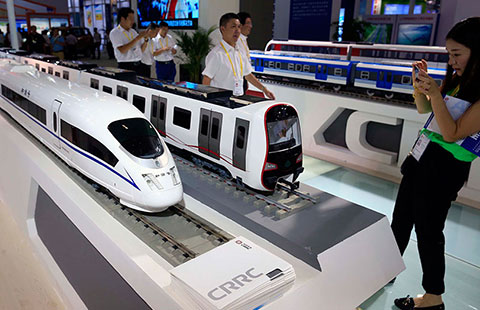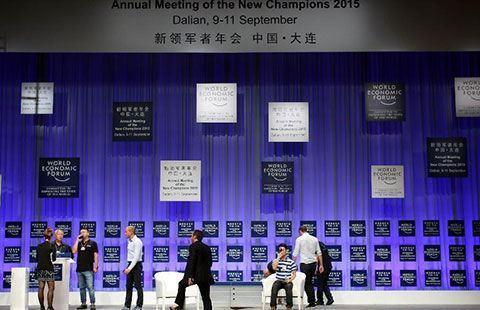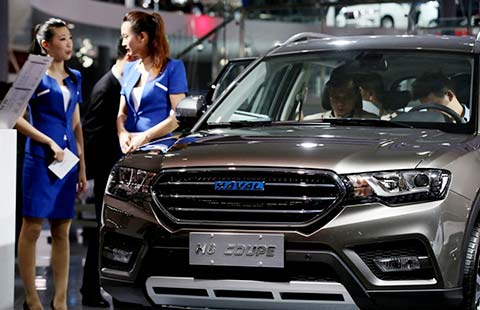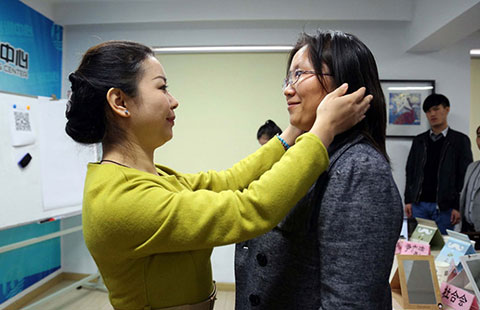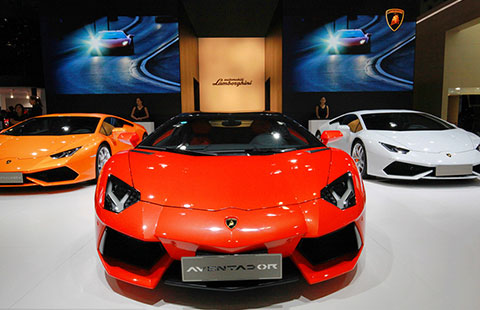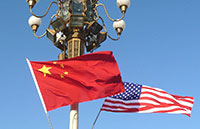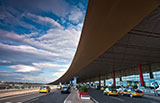China boosts world economy via investment, capacity cooperation
(Xinhua) Updated: 2015-07-31 17:07On the other hand, Chinese enterprises have consecutively adopted the going-out strategy thanks to the advantageous technologies and experiences accumulated in several industries.
With the world economy still slowly bouncing back, the less advanced economies and the advanced economies will face the common challenge of the lack of infrastructure and investment.
Given that background, international capacity cooperation can help developing countries accelerate development in relatively low costs, promote industrial upgrade in China and seek market expansion for developed countries, thus being a remedy for driving global economic growth that will benefit all.
Poor facilities and insufficient investment in infrastructure have turned into a bottleneck for the growth of the world's major economies, especially those major developing ones.
According to the IMF estimates, every one US dollar input in infrastructure will generate three dollars extra. But the problem is that there is a severe shortage of funds in the infrastructure development worldwide, which needs as much as $1.5 trillion.
African Development Bank President Donald Kaberuka recently in Beijing praised the Asian Infrastructure Investment Bank (AIIB) for offering a new way for global infrastructure financing, saying it sets a good model for emerging financial institutions in the 21st century.
Jin liqun, secretary-general of the interim multilateral secretariat for establishing the AIIB, said that the AIIB is a bank initiated by China, but it is not a bank of China, it is a "global bank" and a bank of mutual benefit and multilateral win.
Accounting for one-third of the world economic aggregate, Asia now is the most dynamic region in the world. The AIIB will promote the economic integration of the region, and facilitate the economic integration of the Eurasia continent as well as the economic growth of the whole world, as Asian and European countries join in.
The BRICS New Development Bank (NDB) officially opened in Shanghai last week to finance infrastructure projects, mainly in BRICS countries, and K.V. Kamath from India has been chosen as the president of bank. The first batch of projects of the bank are expected to be implemented by April 2016.
The NDB, launched by Brazil, Russia, India, China and South Africa, has an initial capital pool of 100 billion dollars. The new bank, together with the AIIB, will become an important new force in the world to advance infrastructure construction and sustainable development.
Some experts studying BRICS countries said that the world now more than ever need development banks to tackle challenges faced by infrastructure and sustainable development, and China is leading the development of a series of institutions in the emerging markets in the region and beyond, to finance economic development and maintain financial and business power.
BRICS countries accommodate 42.6 percent of the world's population and share 21 percent of the world's economic aggregate. Trade value among them accounts for 15 percent of the world's total. They contribute 50 percent to the global growth.
The establishment of the NDB will greatly push ahead the South-South cooperation and help boost the rise of emerging economies as a whole in the world.
- 2015 China International Fair for Investment and Trade kicks off in Xiamen
- China's commodity imports robust in Jan-Aug period
- China stocks rebound 2.92%
- 2015 China box office already past 2014 total
- China foreign trade decline widens in August
- Interview: JP Morgan's senior executive bullish on China
- Innovation, development the focus for NZ mayors
- Lives of freelancers
